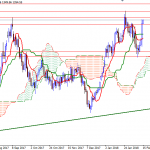Yesterday the Labor Department released data from its December Job Openings and Labor Turnover Survey (JOLTS). One of the items that got lots of attention was a rise in the quit rate to its highest level of the recovery. In fact, it is now pretty much back to pre-recession levels. (This is especially true of workers in the public sector — interesting story for another day.)

While it is good news if workers feel they can leave a job where they are unhappy or which does not fully utilize their skills, the news may not be as good as it first appears. The weak labor market of the last seven years led to very low quit rates. This means that many people who would have left their jobs in a more normal labor market stayed at their job because they were worried about finding a new one. As a result, we should expect there are many more people at jobs they would like to leave in early 2016 than would be the case say in 2007 before the recession hit.
The implication would be that quit rates should not just be returning to their pre-recession level, but rather they should rise substantially above their pre-recession level, at least for a period of time. I’m not sure whether this makes sense or not. We don’t have data on quit rates prior to 2000, so we can’t look back at what happened after prior recoveries from a steep downturn.
Anyhow, it seems plausible to me that the quit rate should be elevated for a period of time to compensate for the unusually low quit rate of prior years. If someone wants to tell me why this is wrong, I’m listening.












Leave A Comment